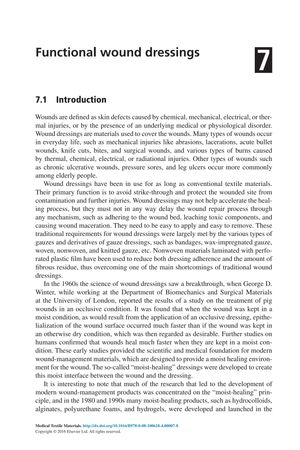Functional Wound Dressings: Evolution and Modern Advances
November 2015
in “
Elsevier eBooks
”

TLDR Modern wound dressings like hydrocolloids, alginates, and hydrogels improve healing and are cost-effective.
The 2016 document detailed the evolution of wound dressings, highlighting the shift from traditional dressings to advanced "moist-healing" dressings like hydrocolloids, alginates, and hydrogels, which have been shown to accelerate wound healing. It explained the wound healing process and the functional requirements of dressings for different wound types, emphasizing the importance of dressings that support the healing stages. The document described various functional wound dressings, including those made from alginate, chitosan, and cellulose fibers, and their roles in managing exudate, controlling microbes, and promoting healing. It also outlined the composition of modern dressings, typically a three-layered structure with a contact layer, a functional layer, and a retention layer, designed to manage wounds effectively while being cost-effective. The development of these dressings aims to improve treatment efficacy and patient outcomes.


